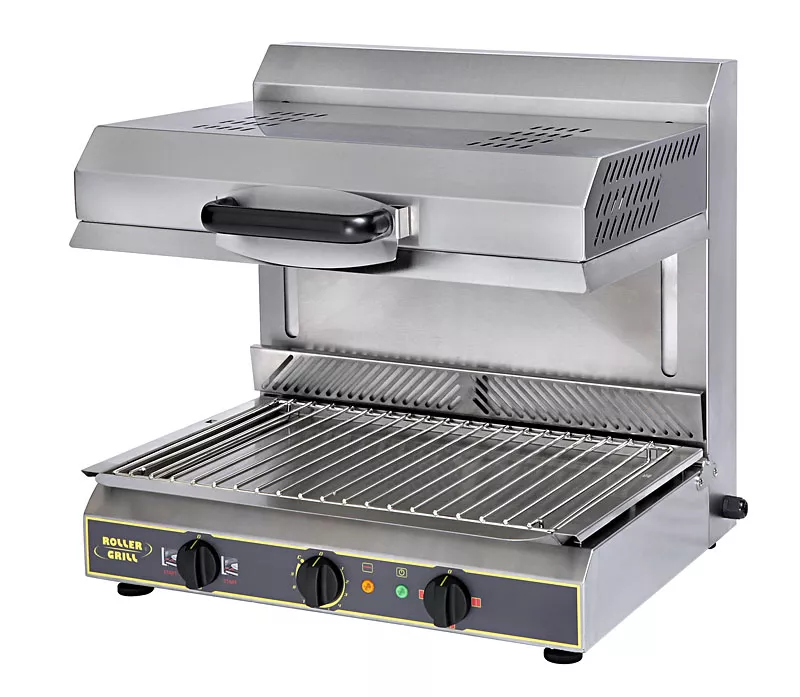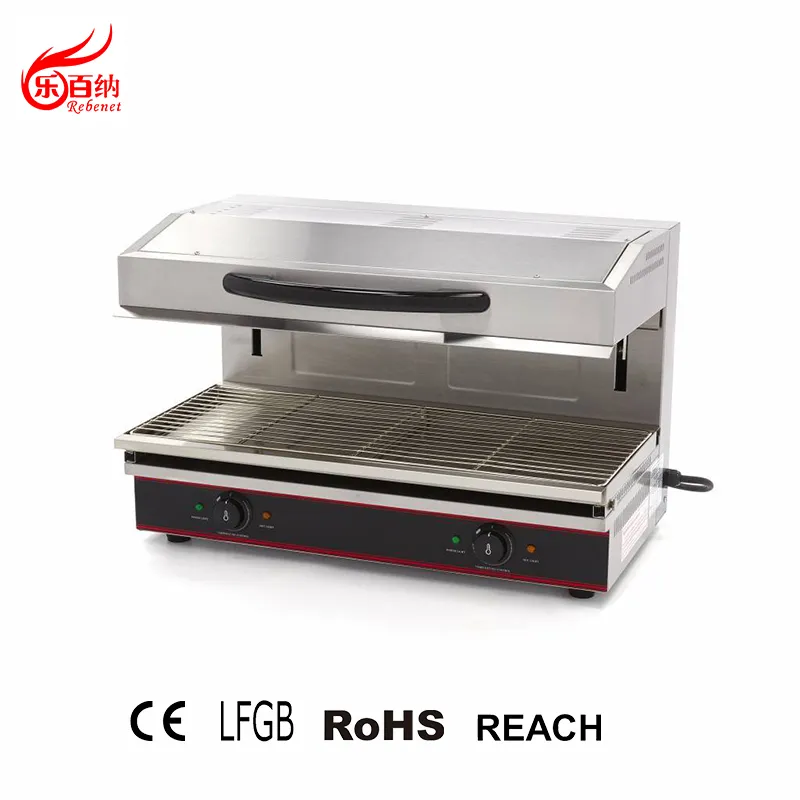Salamander grills are highly efficient, high-temperature kitchen appliances popular in both commercial kitchens and upscale home setups. Renowned for their intense heat output and precise control, salamander grills excel at broiling, toasting, caramelizing, and finishing dishes. These specialized grills offer unique cooking capabilities, setting them apart from conventional ovens and grills. This guide will provide an in-depth look at salamander grills, exploring their uses, types, features, and benefits.
What is a Salamander Grill?
A salamander grill is a specialized broiler commonly used in professional kitchens. Its compact build and powerful heat source make it ideal for cooking applications requiring rapid and intense browning, melting, or crisping. Unlike traditional ovens, salamander grills feature a top-down heating element, allowing precise temperature control for superior cooking results.
These grills can reach incredibly high temperatures, often exceeding 1,500°F (815°C), in seconds. Such intense heat makes them perfect for tasks like toasting, melting cheese, browning meats, and finishing dishes. Salamander grills are typically mounted on walls or countertops for easy accessibility in busy kitchen environments.
Key Characteristics of Salamander Grills
- High Heat Precision: Salamander grills feature powerful heating elements, delivering concentrated heat essential for rapid cooking and finishing touches on dishes.
- Adjustable Racks: The adjustable rack system enables chefs to control the distance between the food and heat source, ensuring flexibility to prevent overcooking delicate items.
- Energy Efficiency: Due to quick heating times, salamander grills consume less energy than traditional ovens, making them ideal for short cooking tasks like melting cheese or searing proteins.
- Compact Design: Designed for efficiency in smaller spaces, these grills maximize heat distribution without occupying excessive kitchen space, a major benefit for high-traffic kitchens.
- Versatile Cooking Abilities: From broiling meat to melting cheese, salamander grills provide diverse cooking options. Their intense, radiant heat ensures quick, even results, making them a go-to for finishing dishes.
Types of Salamander Grills
Gas-Powered Salamander Grills
Gas-powered models use natural gas or propane, making them a preferred choice for commercial kitchens needing consistent heat and responsive temperature control. Known for their durability, these grills offer cost-efficiency in large-scale operations with frequent high-volume cooking.
Electric Salamander Grills
Electric salamander grills are ideal for spaces without gas access, providing precise temperature control and a more compact design. They produce less ambient heat, which can be beneficial in climate-controlled or smaller kitchens. However, electric models may take slightly longer to reach peak temperatures than gas-powered alternatives.
Wall-Mounted Salamander Grills
Ideal for professional kitchens, wall-mounted salamander grills save valuable counter space and allow chefs to monitor dishes without bending. Positioned for easy access, these grills make broiling and finishing faster and more convenient.
Countertop Salamander Grills
Compact and portable, countertop salamander grills are perfect for smaller kitchens. They offer the same powerful broiling capabilities in a convenient, space-saving format, often with adjustable legs to set the grill at an optimal height.

Common Uses for Salamander Grills
Salamander grills are prized for their ability to provide intense, direct heat, making them perfect for a range of cooking techniques:
- Broiling Meat: Quickly broil steaks, chops, and other proteins to achieve a delicious sear and lock in juices, cooking the interior to the desired doneness.
- Toasting Bread: Perfect for toasting buns, rolls, or bread for sandwiches and burgers, adding a crispy finish to garlic bread or other dishes.
- Melting Cheese: Whether for pizzas, French onion soup, or gratins, the salamander grill ensures even cheese melting with a rich, golden finish.
- Finishing Dishes: Often used to add a final crust to pan-seared items like steaks without overcooking, providing the perfect texture.
- Caramelizing and Crisping: Ideal for creating a caramelized top on crème brûlée or a crisp outer texture on vegetables, fish, and more.

Advantages of Using a Salamander Grill
- Speed: Designed for rapid cooking, salamander grills are essential in kitchens focused on efficiency, reducing cooking time for numerous dishes.
- Precision Control: Salamander grills allow chefs to fine-tune cooking results with adjustable racks and heat levels, ensuring perfect browning and melting.
- Space Efficiency: With options for wall-mounting or countertop placement, salamander grills occupy less space than traditional ovens, ideal for compact kitchens.
- Multi-Functional: Salamander grills can broil, toast, finish, and grill with ease, making them a versatile tool for a variety of cooking techniques.
- Energy Efficiency: Their high heat concentration and speed mean salamander grills consume less energy than larger appliances, making them an eco-friendly choice for both restaurants and home kitchens.
Conclusion: The Essential Role of Salamander Grills in Modern Kitchens
Salamander grills are invaluable in any kitchen, from busy commercial environments to gourmet home setups, due to their efficiency, versatility, and precision. These powerful grills bring rapid broiling, browning, and toasting capabilities to a wide range of dishes, delivering high-performance results in limited space. With benefits like adjustable heat, fast cooking times, and compact design, salamander grills are an essential tool for chefs and home cooks looking to achieve professional-level cooking results with ease. In a world where kitchen space and time are precious, the salamander grill meets the demands of modern culinary needs.
